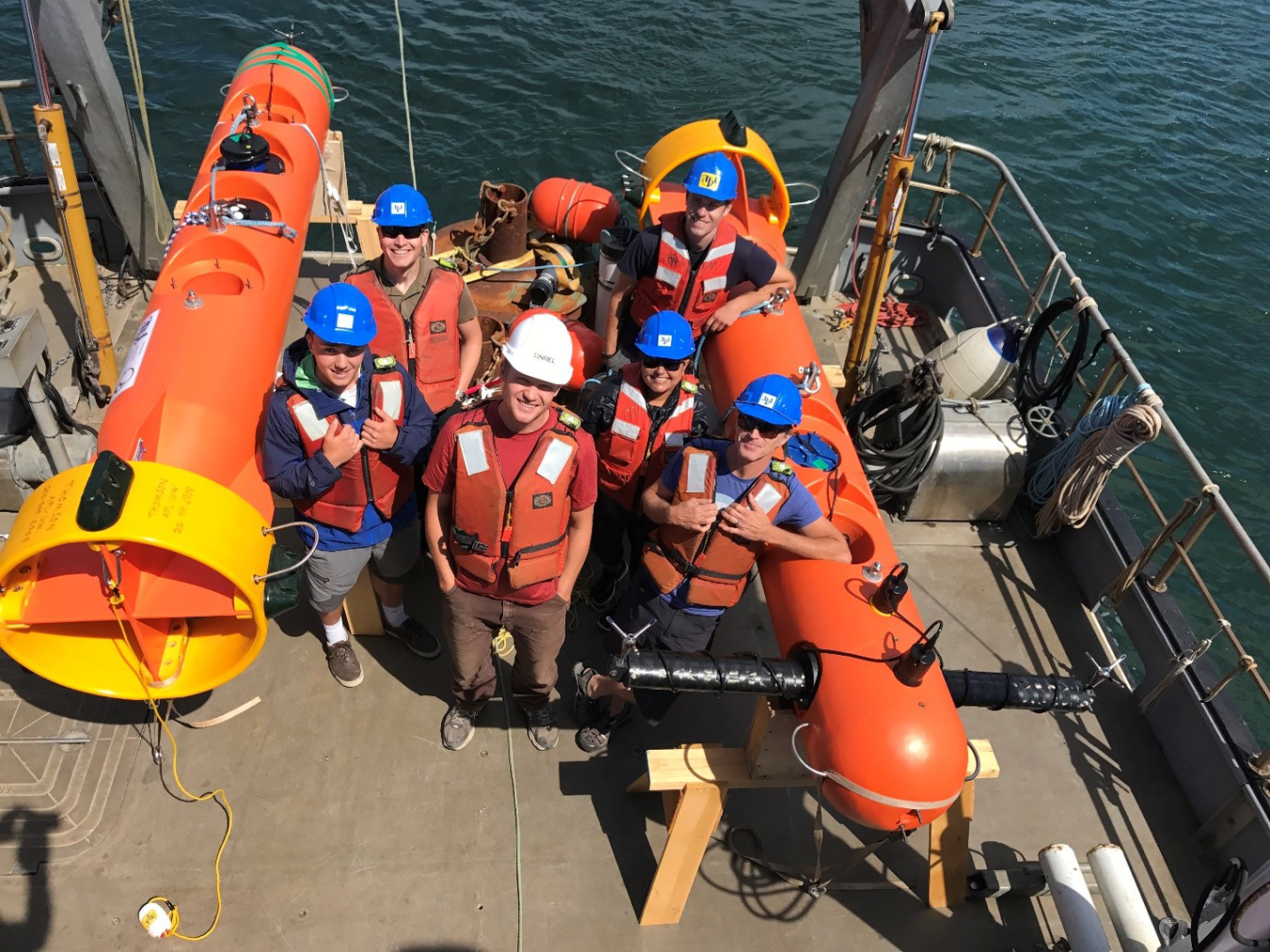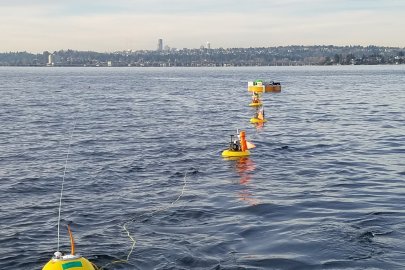In 2020, WPTO’s multi-lab resource characterization project released the highest resolution, most comprehensive wave dataset publicly available.
Water Power Technologies Office
January 13, 2021At the end of 2020, DOE developed a methodology and released new models and characterization data on the U.S. wave energy resource, including the highest resolution, most comprehensive wave data set publicly available to date. The new methodology, created by the multilab resource characterization project, supports a more complete accounting of how wave energy totals are estimated, resulting in a 30% increase in the estimate of the U.S. wave energy resource potential. With funding from WPTO and led by NREL with support from PNNL and Sandia, the project developed the refined wave resource assessment methodology, enabling an accounting of the effect of local winds blowing on the ocean surface within the U.S. Exclusive Economic Zone, as well as the waves that arrive at U.S. coastlines from the open ocean.
Previous wave resource estimates were at roughly 2,600 terawatt-hours per year, and current estimates, thanks to this improved resource accounting, total 3,500 terawatt-hours per year. The exhibited increase in available wave resources is largely because of this change in the calculation methodology. The project team also developed publicly available, high-resolution wave resource models to cover the entire U.S. Exclusive Economic Zone, spanning 200 nautical miles from shore (including island territories), and covering a 32-year time frame. The refined wave resource assessment methodology will be published in early 2021.
Part of marine energy’s value proposition is its predictability, especially in the case of tidal energy, which can be projected with great accuracy over several decades. While tide patterns are entirely predictable, waves have greater predictability on daily and weekly scales compared to other renewable technologies such as wind and solar. The improved resource assessment methodology, coupled with this longer record of wave history, equips the marine energy industry with needed data to identify exactly where marine energy projects could prove most viable, which can have implications for optimal technology design.

The high-resolution nature of the data set is especially valuable because it allows project developers to pinpoint specific sites with the most promising wave energy potential and enables them to identify technologies and tailor array layouts in ways that previous data sets did not support. For example, it can capture the ways in which waves refract in shallower waters—the physics behind how wave crests align with a coastline—and focuses energy at points. The longtime frame of the data record also allows project developers to evaluate risk by comparing the statistics of large waves over periods of time that are similar to the life span of wave energy projects.
The data set could prove valuable to any organization with marine operations inside the U.S. Exclusive Economic Zone, such as the oil and gas industry for offshore platform engineering, the offshore wind industry for turbine and array design, offshore aquaculture production, coastal communities for extreme hazard mitigation, or global shipping companies and fishermen, for a better understanding of weather windows and seasonal wave climate patterns. To successfully disseminate data of such immense volume—currently around 5 terabytes but expected to grow to approximately 100 terabytes—the project team partnered with cloud services companies to host the data set.
In 2021, the project team hopes to render the tool—groundbreaking in terms of the spatial coverage of the data set as well as the cloud-based delivery mechanism—even more user-friendly by making the data available within the MHK Atlas, an interactive tool that maps U.S. wave, tidal, ocean, ocean thermal, and riverine current resources. The three-lab team also plans to complete high-resolution wave models for the Gulf of Mexico, Hawaii, and all U.S. island territories, and host the data from these models publicly, giving industry and researchers access to drive new research and innovation.
For additional information, contact Al LiVecchi.


